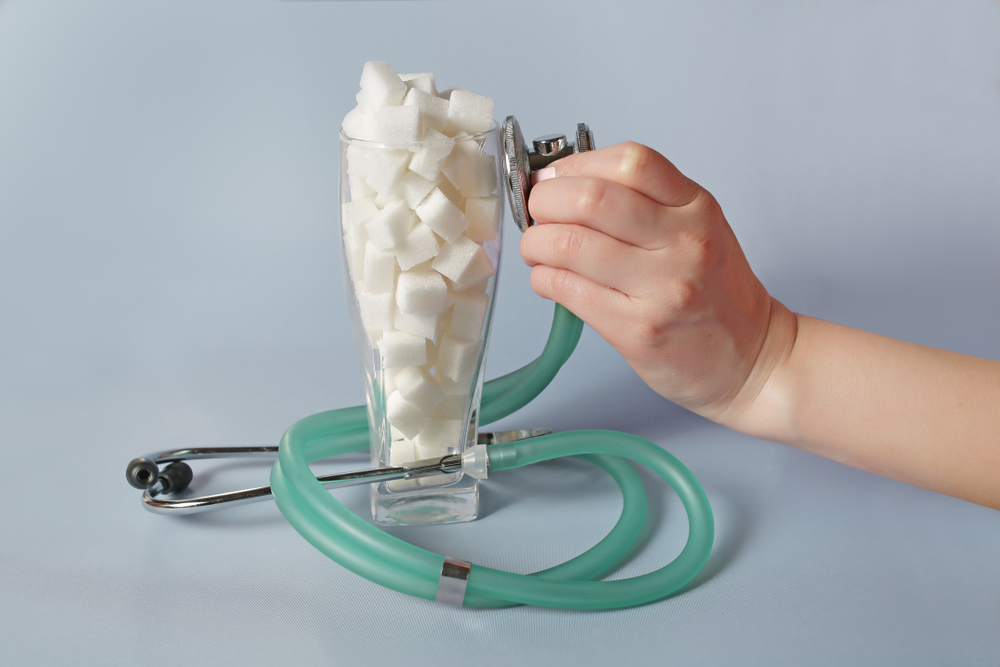Type 2 diabetes is a true epidemic in America – over 30 million adults are currently living with the condition, according to the CDC¹. And another 84 million people have prediabetes, meaning they’ll soon be diagnosed with type 2 diabetes.
Many people who have prediabetes don’t realize they’re at risk. And some people are already living with type 2 diabetes but haven’t been diagnosed, putting their health in danger every day.
 This is surprisingly common. Type 2 diabetes doesn’t show clear, obvious signs when it begins. It can show only mild symptoms at first, gradually worsening over time. And that leaves many people unsure of whether or not they have type 2 diabetes.
This is surprisingly common. Type 2 diabetes doesn’t show clear, obvious signs when it begins. It can show only mild symptoms at first, gradually worsening over time. And that leaves many people unsure of whether or not they have type 2 diabetes.
Could you be living with type 2 diabetes and not even know it? Here are some of the telltale signs of this condition to help you find out.
You’re Making Frequent Bathroom Trips
One of the first – and clearest – signs of type 2 diabetes is frequent urination. If you’re peeing more often, both all day and all night, there’s cause for concern.
As Healthline² explains, this frequent need to head to the bathroom is called polyuria. And it’s a sign that your blood sugar levels are too high. Your kidneys can’t keep up with the amount of sugar (or glucose) present, so it escape into your urine.
You’re Always Thirsty
Are you constantly feeling thirsty? Have you been drinking a lot more water because you feel like you need it? Excessive thirst is a common early sign of type 2 diabetes.
If you’re drinking plenty of water but aren’t satisfying your thirst, you might have type 2 diabetes. High blood sugar levels can cause you to be extremely thirsty. Having a lot of glucose in your bloodstream can make you crave water – and because you’re drinking all that water, you’ll also need to urinate more often.
You’re Always Hungry – Even If You’re Eating Normally
In addition to a constant thirst for something to drink, you might also notice that you’re always hungry. Those with type 2 diabetes are constantly craving food, and it could be the cause of your persistent hunger.
According to Healthline³, this symptom is known as polyphagia. An early warning sign of diabetes, polyphagia happens when your body can’t use glucose to feel your cells. Your cells begin to lack the “nutrition” they need, so your body is constantly looking for more food – leaving you hungry. This tends to occur when you have high blood sugar levels and glucose is being released through your urine.
Your Wounds Aren’t Healing As Quickly
Here’s something unusual to look out for: slow-healing wounds. If you notice that cuts, scrapes, or deeper wounds are taking longer than normal to fully heal, it could be a sign of type 2 diabetes.
Often, those with type 2 diabetes have a harder time getting their bodies to heal when needed. Healthline⁴ notes that high blood sugar levels will cause this to happen. An increase in glucose can narrow the blood vessels, slowing down your circulation and preventing nutrients and oxygen from getting to any wounds.
You’re Experiencing More Itching, or More Frequent Yeast Infections
Have you been getting yeast infections when you’ve never experienced them before? Or are you noticing that you’re getting yeast infections much more often? If there’s a change in the frequency of yeast infections at all, you’ll want to talk to a doctor.
Yeast infections are common in those with type 2 diabetes, all thanks to that increase in blood sugar levels that tends to happen. As Medical News Today⁵ explains, the extra glucose in your bloodstream and urine is perfect for yeast – and that can create the perfect environment for an infection to form.
Type 2 diabetes can lead to yeast infections anywhere that’s warm and moist, and they’re often very itchy. You might experience them in your mouth, genital areas, or armpits.
Do You Have Type 2 Diabetes? Keep a Close Eye on Your Health
Could you have type 2 diabetes and not even know it? While it might sound like something no one could miss, it’s actually very, very easy to not notice the early signs of this medical condition. And, if left untreated, type 2 diabetes can become a deadly problem.
You need to know what type 2 diabetes looks like, even when symptoms are just beginning or mild. That’s the only way to catch the changes happening in your body and to your health. So, you need to be informed.
The best way to be knowledgeable and up-to-date on type 2 diabetes is to do your research. Make sure you know what diabetes can look like and how it can begin. And you’ll also want to know its causes, how it’s treated, and how you can keep this condition under control, if you’re diagnosed.


